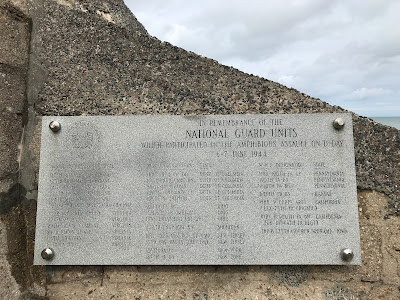On June 6, 1944, more than 160,000 Allied troops landed along a 50-mile stretch of heavily-fortified French coastline, to fight Nazi Germany on the beaches of Normandy, France. Gen. Dwight D. Eisenhower called the operation a crusade in which, “we will accept nothing less than full victory.” More than 5,000 Ships and 13,000 aircraft supported the D-Day invasion, and by day’s end, the Allies gained a foot-hold in Continental Europe. The cost in lives on D-Day was high. More than 9,000 Allied Soldiers were killed or wounded, but their sacrifice allowed more than 100,000 Soldiers to begin the slow, hard slog across Europe, to defeat Adolf Hitler’s troops.
On our trip to Normandy in 2019, we went to the D-Day beaches. Our tour began at the D-Day 75 Garden in Arromanches-les-Bains. This garden was dedicated on June 6, 2019, the 75th anniversary of D-Day and pays tribute to the veterans of the Battle of Normandy. It overlooks Mulberry Harbor and Gold Beach, one of the five D-Day landing beaches.
 |
| The National Guard Monument Memorial at Vierville-sur-Mer |
The bunkers are pock marked from Allied fire and the gun pits remain. The area is grass covered today and looks much the same as it did when the Germans were stationed there in 1944.





Everyone should make that trip, and think deeply about what happened and why.
ReplyDeleteSo agree. I want to go back and spend more time there.
Delete